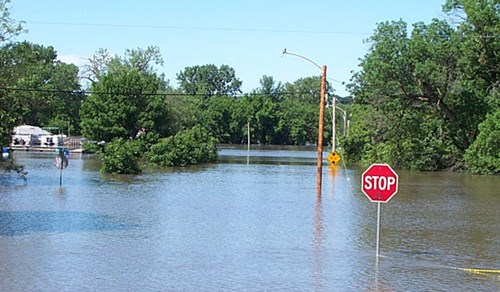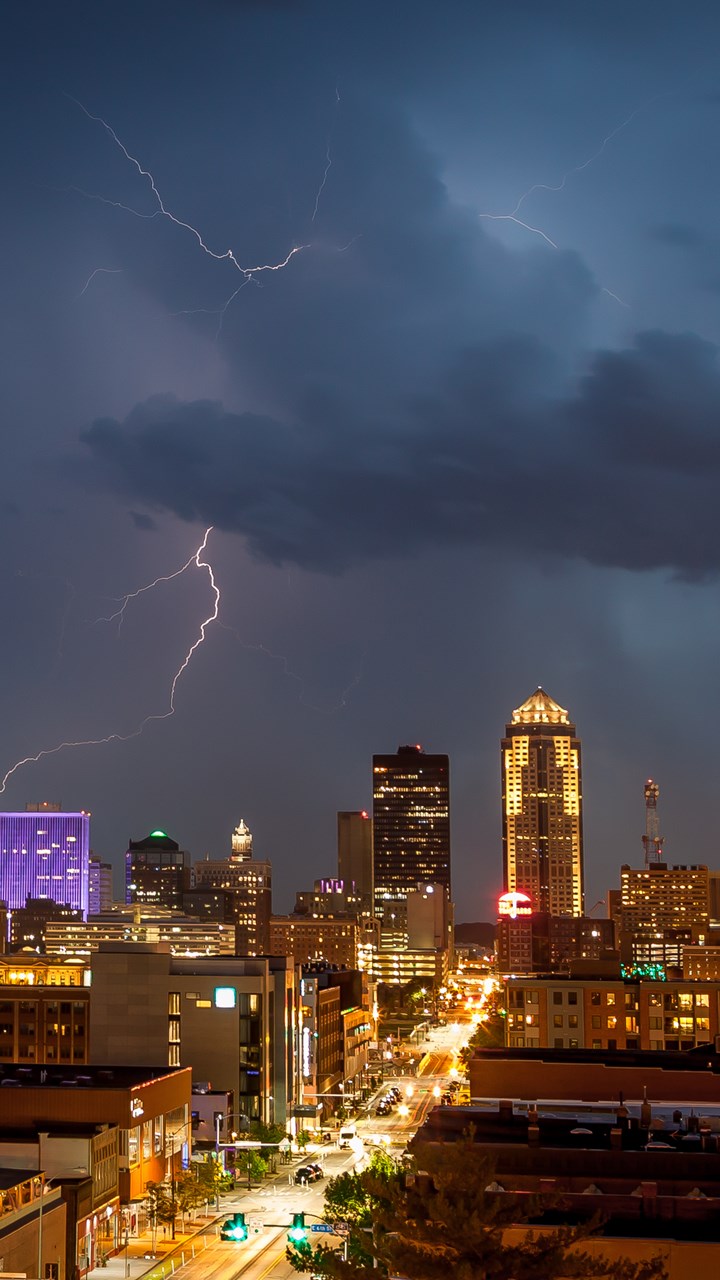Flooding
Flooding caused by heavy rains is dangerous and can occur without warning. Floods are particularly dangerous because they can wash away vehicles and mobile homes and cause extensive damage to property. Individuals who can’t swim, the elderly and those in need of special assistance are particularly vulnerable to drowning. Also a serious threat during a flood, are downed power lines. Those could fall into pools of water and cause electrocutions in homes and on public streets.


Before a Flood
- Avoid building in a floodplain unless you elevate and reinforce your home.
- Elevate the furnace, water heater, and electric panel if susceptible to flooding
- Install check valves in sewer traps to prevent floodwater from backing up into your home.
- Construct barriers (levees, beams, sandbags, floodwalls) to stop floodwater from entering the building.
- Seal walls in basements with waterproofing compounds to avoid seepage.
- Keep an adequate supply of food, candles and drinking water in case you are trapped inside your home.
During a Flood
- Seek higher ground. Do not wait for instructions.
- Be aware of flash flood areas such as canals, streams and drainage channels.
- Be ready to evacuate. If time allows bring outside furniture indoors. Move essential items to upper floors.
- If instructed, turn off main valves and switches. Avoid electrical equipment if you are wet or standing in water.
- If you must leave your home, do not walk through moving water. Six inches of moving water can knock you off your feet. Use a stick to test depth.
- Do not try to drive over a flooded road. If your car stalls, abandon it immediately and seek an alternate route.
After a Flood
- Avoid floodwaters. Do not let children play in the water.
- Be aware of areas where water has receded. Roadways may have weakened and could collapse. Avoid down power lines and muddy waters where power lines may have fallen. Return home only when authorities say it is safe to do so.
- Discard food that may have been contaminated.
- Check on sewage systems. If damaged, these can be a serious hazard.
- Make sure the building is structurally safe to enter or reoccupy.
- Turn off electrical power. Do not use electricity until it is safe to do so.
- Ensure that natural gas sources are safely secured.
- Secure the exterior to prevent further water intrusion. This can include boarding up broken windows, making temporary roof repairs, sealing cracks or tacking down plastic sheeting against open gaps in walls or roofs.
When It’s Safe to Begin Cleanup
- Disconnect all electronics/electrical equipment and move it to a safe, dry location.
- Remove as much standing water as possible from inside the building.
- Begin to remove water-damaged materials immediately.
- Ventilate the home as best you can with fans and/or dehumidifiers.
- Contact a water extraction company, if necessary, for assistance.
By taking immediate action, you will reduce the amount of damage and increase the chance of salvaging usable materials. You'll also reduce the amount of rust, rot, mold and mildew that may develop, and lower the likelihood that the water will lead to structural problems.
